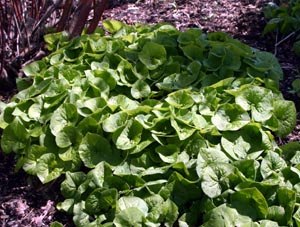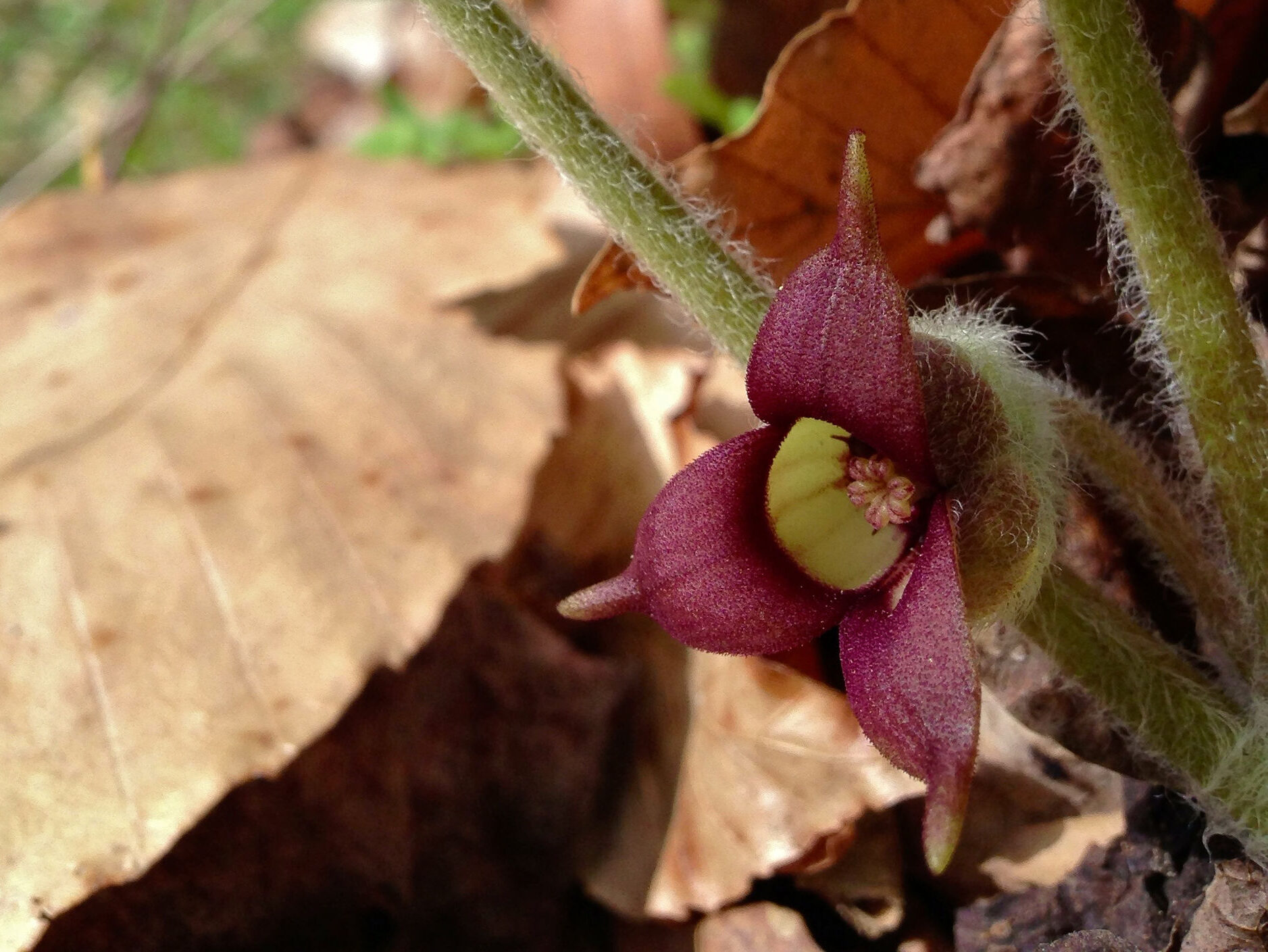Asarum canadense
Late in the summer of 1837, twenty-five members of the Saint Francis Abenaki tribe arrived in Deerfield, Massachusetts.1 They were descendants of a former Deerfield resident, Eunice Williams, and were warmly received by many Deerfield residents, including white members of the Williams family.
Dr. Stephen West Williams, however, famously offended his Abenaki relatives when he refused the medicine their physician, Louis Watso, prepared to treat his heart palpitations.2 This medicine, which Williams describes in his herbarium, was composed primarily of snakeroot (Asarum canadense), also known as wild ginger or Canadian wild ginger. Williams recounts that Watso’s family, who visited in 1837, “use it extensively in many complaints,” often in a powder or tincture.3
Plants of the genus Asarum have long been used in traditional medicine around the world. However, they may only be medicinal in expert hands. Aristolochic acids, found in these plants, are carcinogens and nephrotoxins and can be fatal if consumed in large quantities.4

Wild ginger has heart-shaped, dark green leaves and a ginger-like odor. The crimson, bell-shaped flowers hang under the foliage, resembling rotting carrion to attract carnivorous pollinators.5 Ripe seeds are encased in an oily envelope called the elaiosome. Elaiosomes attract ants to the seeds, which carry them into their underground colonies to be eaten. The ants eat the eliasomes but do not eat the seeds themselves. Thus, the seeds are safely protected from predators underground until germination.
- Bruchac, Margaret. “Abenaki Connections to 1704: The Sadoques Family and Deerfield, 2004.” Bruchac, Margaret. “Abenaki Connections to 1704: The Sadoques Family and Deerfield, 2004.” In Captive Histories: Captivity Narratives,
French Relations and Native Stories of the 1704 Deerfield Raid. Evan Haefeli and Kevin Sweeney, eds. pp. 262-278. Amherst, MA:
University of Massachusetts Press. ↩︎ - Ibid. ↩︎
- Williams, Stephen W. Report on the Indigenous Medical Botany of Massachusetts, 1849. ↩︎
- Michl, Johanna, Olusheyi Bello, Geoffrey C Kite, Monique S J Simmonds, and Michael Heinrich. “Medicinally Used Asarum Species: High-Resolution LC-MS Analysis of Aristolochic Acid Analogs and in Vitro Toxicity Screening in HK-2 Cells.” Frontiers in pharmacology, May 22, 2017. https://www.ncbi.nlm.nih.gov/pmc/articles/PMC5439001/. ↩︎
- “U.S. Forest Service.” Forest Service Shield. Accessed May 1, 2024. https://www.fs.usda.gov/wildflowers/plant-of-the-week/asarum_canadense.shtml. ↩︎
